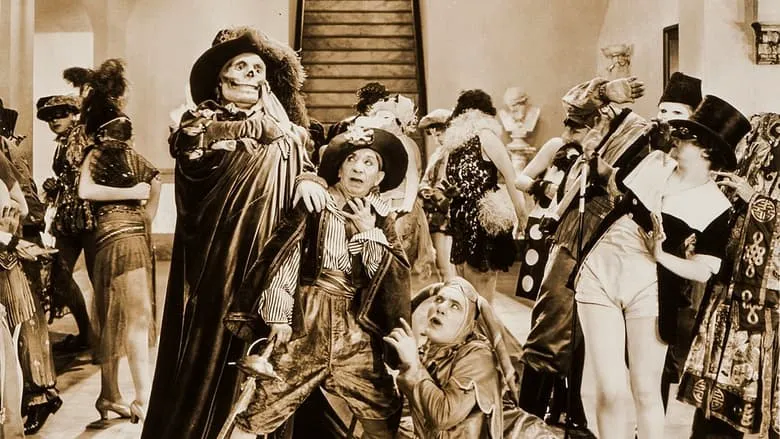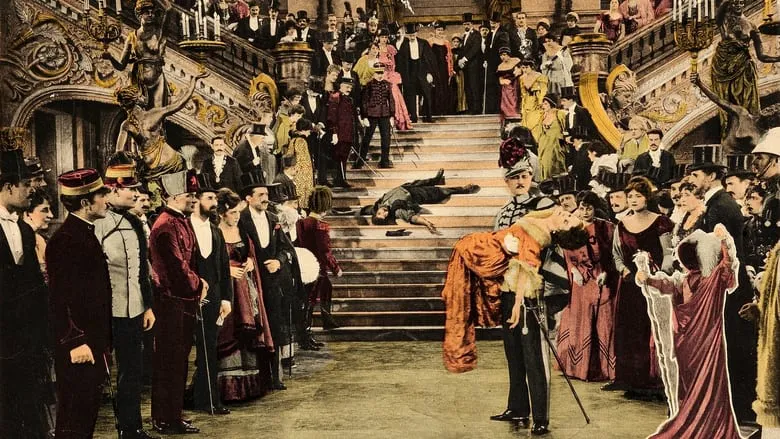The Phantom of the Opera: A Spectacle of Sound and Vision
Forget what you think you know about “The Phantom of the Opera.” This isn’t just a ghost story or a musical; it’s an opera through and through. From arias to recitatives, the characters are constantly singing. Keep this in mind before diving into Joel Schumacher’s adaptation, or the constant singing might overshadow the film’s visual splendor. Schumacher’s touch is most evident in the film’s aesthetics, as Gaston Leroux’s original novel already straddled the line between gothic horror, melodrama, detective fiction, and sensational journalism. With countless adaptations, including the Broadway hit, the story has become a melting pot of influences.

The film opens with a static, black-and-white photograph of an old street. As the camera zooms in, the street comes to life. A tracking shot pulls you into that bygone era. The scene shifts to the interior of a dilapidated opera house, now the site of an auction. Artifacts from the theater’s past are scattered around, including a fallen chandelier on the broken floor. As the chandelier is sold, a magical whirlwind erupts, transforming the dilapidated space. Crimson velvet, gold tassels, and opulent seating emerge, creating a visually stunning opening sequence. These moments of visual transformation, along with a staged hanging, showcase Schumacher’s ambition to create something truly inventive. However, the story around these visuals leaves something to be desired.

A Disconnect in Time and Character
The film immediately presents inconsistencies. The auction takes place in 1919, while the main story unfolds in 1870. Miranda Richardson, playing an older character at the auction, appears to be made up to look seventy years old, despite being only in her fifties during the main events. This temporal disconnect suggests that the entire film operates on a level of heightened unreality. This extends to the plot, character psychology, performances, and even the dubbing. Imagine someone suddenly speaking in a normal voice, but in Russian, while the arias are sung in English with subtitles. Recitatives like “Why aren’t you si-i-inging?” are also delivered in Russian. The three leads – Christine (Emmy Rossum), the Phantom (Gerard Butler), and the Viscount (Patrick Wilson) – deliver their lines with varying degrees of vocal success, while Carlotta (Minnie Driver) is dubbed by an Italian singer. Ironically, Driver’s dubbed voice is arguably better than Rossum’s own, despite the plot hinging on the Phantom’s preference for Christine’s voice. The Phantom wants Christine to be the prima donna, presumably hoping she’ll fall in love with him in gratitude, because Carlotta’s voice offends his refined sensibilities.

A Lack of Emotional Resonance
However, Carlotta’s voice isn’t particularly offensive. It’s more likely that Emmy Rossum’s thin, saccharine voice, calculated to elicit sympathy, is the real problem. There’s little to admire over the film’s two-hour runtime. Perhaps the music is to blame. Andrew Lloyd Webber’s score relies heavily on one famous leitmotif, which, while initially appealing, becomes repetitive and monotonous. The arias and duets drag on, illustrating the action rather than driving it forward. The lyrics are often stretched to fit the rhyme scheme, and the actors’ exaggerated expressions and gestures – wide eyes and outstretched arms – become tiresome. It’s a challenge to stay awake amidst the sheer volume of it all.

A Broadway Warning
The film has been touted as a blockbuster musical, but Schumacher offers a valuable warning: don’t waste your money on such productions on Broadway. The Phantom’s ridiculous makeup, the actor’s unpleasant vocals, the absurd dances at the costume balls (which feel more like modern Broadway than 1870 or even 1770), the theatrical dungeons, and the artificial-looking winter landscapes all fall flat. The plot, centered on the Phantom’s jealous obsession with Christine and his rivalry with the Viscount, is ultimately overwhelmed by the endless opera. Any potential for fear, sympathy, or recognition is lost in the musical deluge.
Ultimately, the question arises: what justifies Schumacher’s reliance on artifice? What redeeming qualities does his film possess? The time is wasted, the sense of immersion is nonexistent, and the boredom is palpable. Unless you’re someone who enjoys singing in the shower every morning, you’ll likely feel cheated by this production.